Stratasys has today plowed forwards with its additive manufacturing strategy, having introduced three new 3D printers for end-use parts – the Origin One, the H350, and F770 FDM.
The systems, which incorporate Stratasys’ fused deposition modeling (FDM), P3, and selective absorption fusion (SAF) 3D printing technologies, are together geared towards accelerating the shift from conventional to additive manufacturing for low-to-mid-volume production applications.
“We are accelerating into the Additive Manufacturing 2.0 era, in which we see global manufacturing leaders move beyond prototyping to fully embrace the agility that 3D printing brings to the entire manufacturing value chain,” said Yoav Zeif, Stratasys CEO. “The disruptions we are seeing today on both the supply and demand side of global supply chains are a clear sign that the status quo isn’t working.
“Additive manufacturing gives companies the total flexibility to decide when, where, and how to produce parts.”
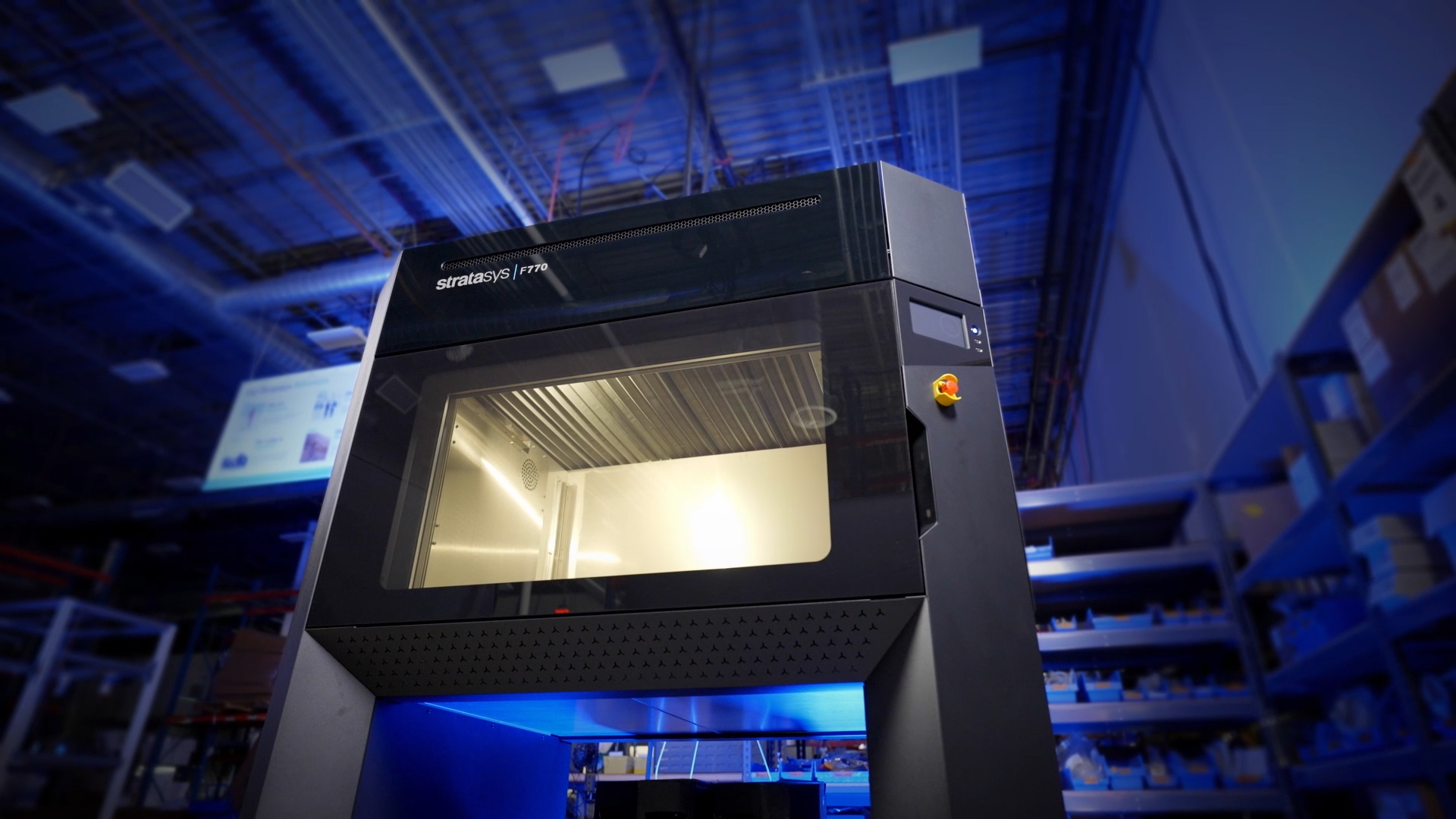
The Origin One: Production scale intricate parts
The first new machine introduced by Stratasys is the Stratasys Origin One, designed for end-use manufacturing applications. The launch of the new 3D printer comes off the back of Stratasys’ acquisition of DLP machine manufacturer Origin at the end of last year.
The machine uses proprietary high-speed P3 technology based on programmable photopolymerization to produce accurate, detailed, and repeatable parts at volume in a variety of open and certified third-party materials.
Stratasys’ new 3D printer is a significant upgrade on the Origin One 3D printer launched in 2019 prior to the acquisition, featuring over 100 hardware design improvements designed to provide better ergonomics for customers and refine the production workflow.
Stratasys’ Origin One also has improved serviceability for rapid on-site servicing with the firm’s team, and is equipped with substantially more headroom than the previous Origin One in order to improve print speeds, reliability, and precision through future software updates. The new 3D printer will reportedly produce more accurate parts than its predecessor with between 10-30 percent faster print speeds.
The company also increased the Origin One’s build volume in the Z-direction to enable its customers, such as ECCO in the footwear industry, to make it easier to print large, solid production molds that replace metal tooling. The printer supports part dimensions up to 192 x 108 x 370 mm and can print details less than 50 microns in size.
The software upgrades will be available to the existing installed base via a cloud-delivered update when the Origin One begins shipping, currently planned for Q4.
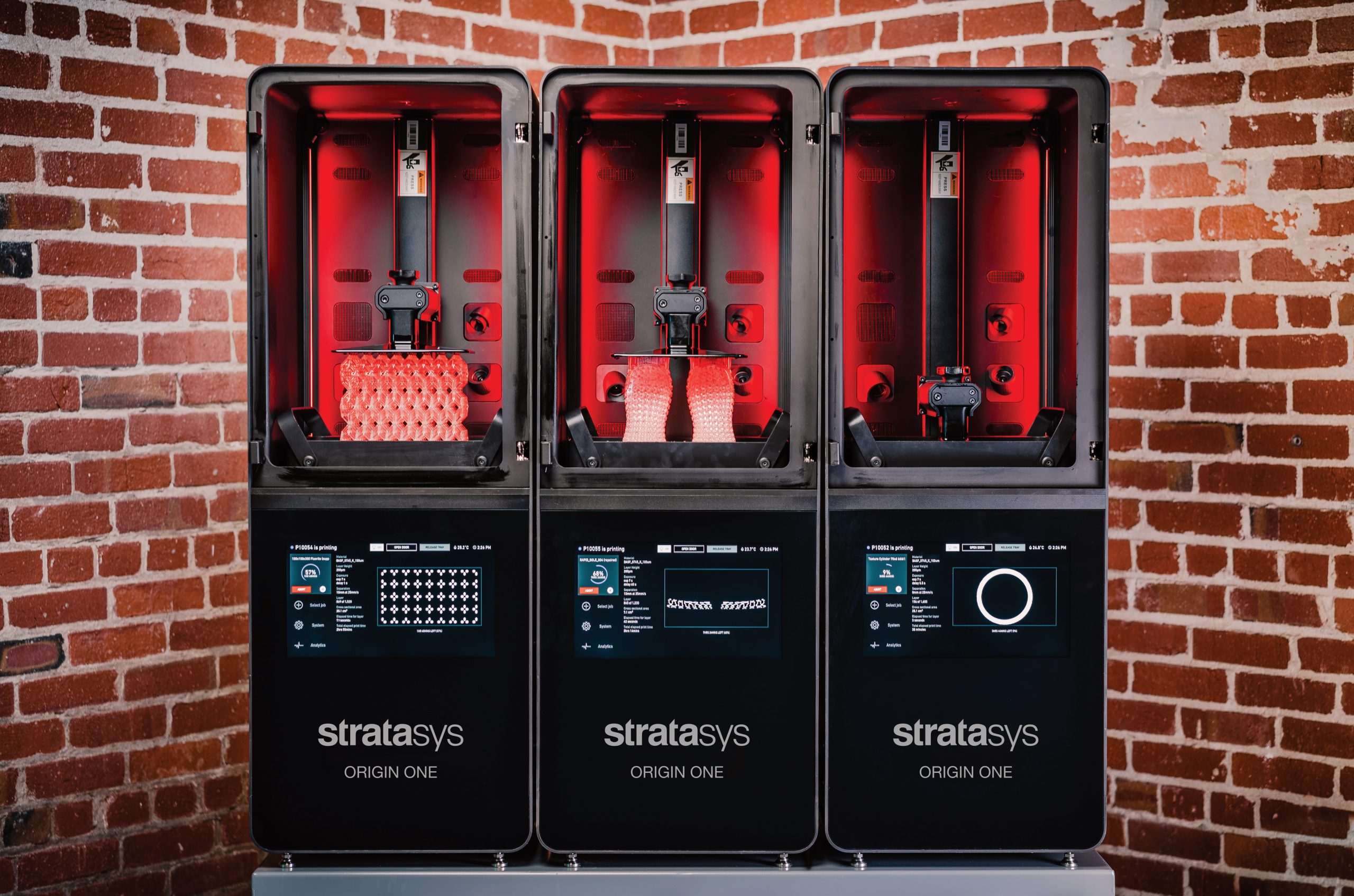
Leading sensor and connector developer TE Connectivity was one of Origin’s first customers, producing thousands of additively manufactured parts including its first-ever 3D-printed aerospace production product.
“We have been laser-focused on meeting stringent accuracy and repeatability criteria for 3D printed connectors that require double-digit micron accuracy,” said Mark Savage, Global Center of Excellence Leader for additive manufacturing at TE Connectivity. “Stratasys and Origin have been great partners in helping us achieve these targets and demonstrating the possibilities of using additive manufacturing at the scale of tens of thousands of parts. Today, we’re seeing the hardware, the software, and the materials from Stratasys really come together to begin making production scale a reality for us.”
According to internal Stratasys estimates, by 2025 there will be a £3.7 billion market opportunity for production-oriented sectors suited to the Origin One, such as automotive, consumer goods, medical, dental, and tooling applications.
“We believe our P3 enabled Origin One 3D printers are ideal for addressing a wide range of in-demand production applications on a global scale,” said Chris Prucha, Vice President of P3 Research and Development and Product Management at Stratasys, and Origin Co-Founder. “Stratasys has given the Origin team an opportunity to accelerate the roll-out of this amazing technology to truly transform manufacturing across industries from dental to industrial products.”
Stratasys will begin taking orders for the 3D printer, in addition to relevant post-processing and software, at the start of May. At launch, the certified third-party materials include 10 industrial high temperature, tough, elastomer, general purpose, and medical-grade materials.
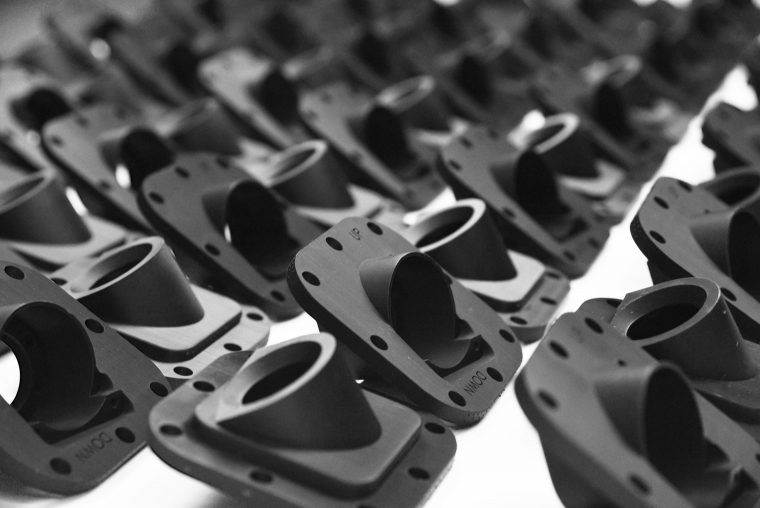
The H350: Production scale 3D printing
The second 3D printer announced by Stratasys is the H350, the first machine in Stratasys’ new H Series Production Platform. The printer is powered by the firm’s new powder-based 3D printing technology SAF, which is based on a high speed sintering process originally developed by inkjet printhead supplier, Xaar 3D.
SAF 3D printing involves selectively jetting an infrared-sensitive High Absorbing Fluid (HAF) binder onto a bed of polymer powder, by means of passing industrial piezoelectric print heads over the full width of the build area. The system then passes an infrared lamp over the powder bed which melts the HAF-infused areas and fuses the powder particles together to form solid layers.
SAF technology also benefits from the Big Wave powder management system to reduce powder aging via a counter-rotating roller that rapidly recirculates any powder that may have overflowed. This can result in lower operational costs as each build will require less fresh powder.
Powered by SAF, the Stratasys H350 is designed to deliver production-level throughput for end-use parts while providing production consistency, competitive cost per part, and complete control over the production of thousands of parts. In fact, the printer itself is equipped with around a dozen parts 3D printed with SAF technology.
Potential applications include end-use parts such as covers, connectors, hinges, cable holders, electronics housing, and ducting.
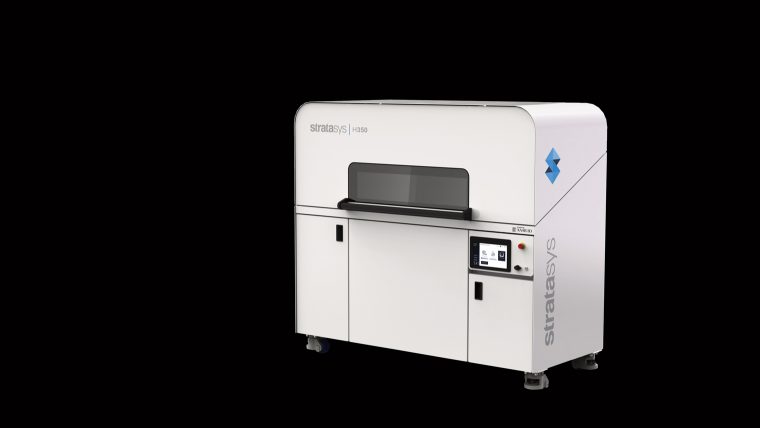
“We see production-scale 3D printing transforming manufacturing in industries around the world as companies seek to move with more agility and efficiency,” said Omer Krieger, Stratasys’ Executive Vice President of Product Strategy and Corporate Development.
“We believe the H350 and SAF technology will stand out compared to traditional manufacturing methods and alternative 3D printing solutions when you need reliable, repeatable production at volumes of several thousand parts and with compelling economics.”
The H350 has been in beta testing since early 2021 with 3D printing service bureaus and manufacturers in Europe, Israel, and the US. Stratasys expects to ship the printer more broadly to customers in Q3 this year. The initial material used for the H Series systems is Stratasys’ bio-based High Yield PA11, made from castor oil.
Philipp Goetz, Owner of Germany-based service bureau Goetz Maschinenbau, says adding a Stratasys H350 will be a key component of his firm’s growth growing forwards.
“We have fulfilled orders for both large parts as well as up to several hundred smaller parts,” he said. “We have been impressed with the performance of the system and SAF technology, with consistent parts throughout the build volume. The system has also been remarkably reliable.”
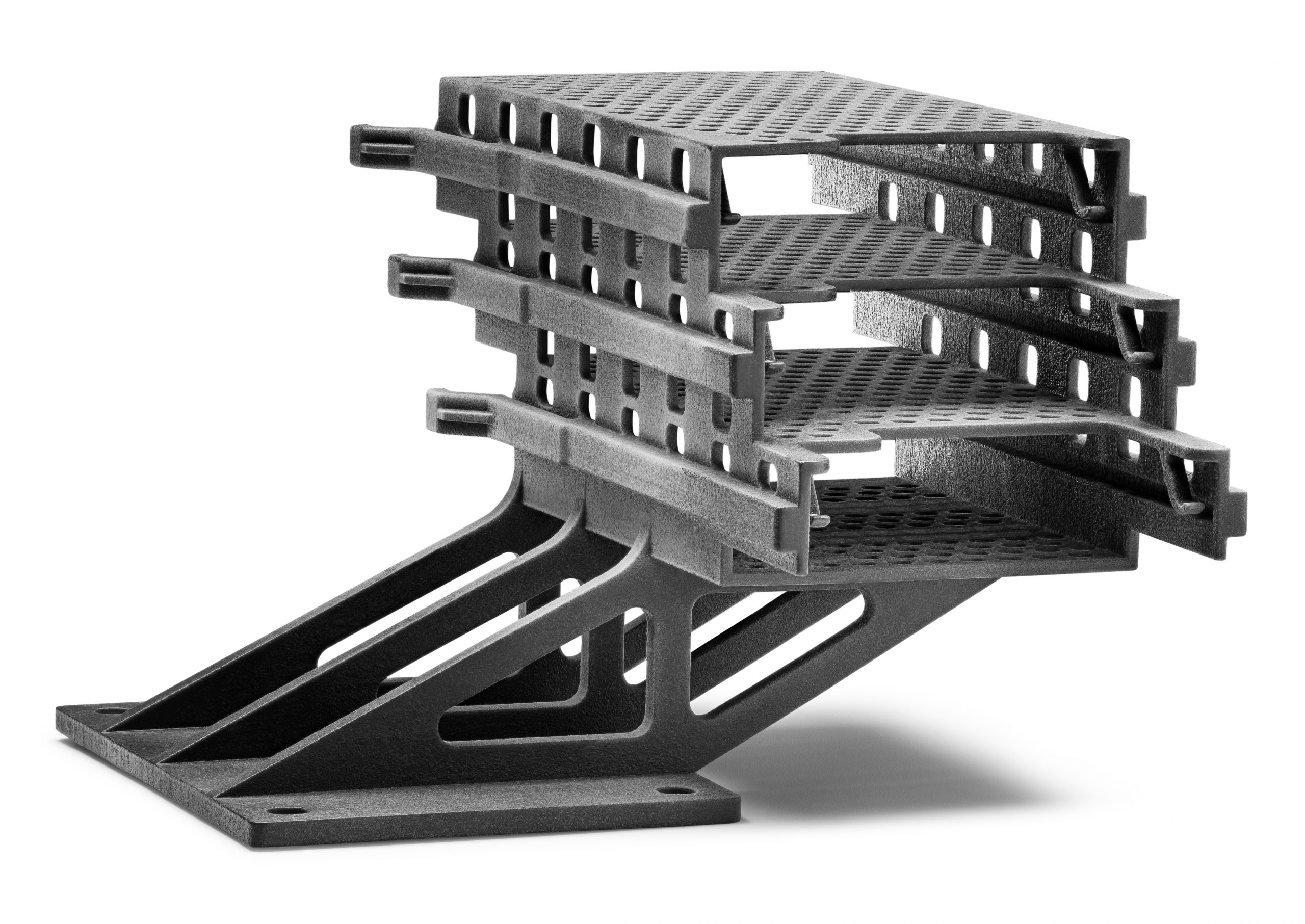
F770 FDM: The “longest fully heated build chamber on the market”
Last but by no means least, the third new system announced today by the company is the Stratasys F770 3D printer powered by the firm’s industrial-grade FDM technology. The F770 is best-suited to big parts, being equipped with what Stratasys claims is the “longest fully heated build chamber on the market”, measuring 46 inches on the diagonal, and a 13 cubic feet build volume.
Priced under $100,000, the F770 has been developed for thermoplastic prototyping, jigs and fixtures, and tooling applications. The machine features GrabCAD print software in order to streamline the CAD-to-print workflow and enable enterprise connectivity. Meanwhile, the printer uses soluble support material to allow parts with complex internal structures to be printed with minimal post-processing.
With a build envelope of 111 x 610 x 610 mm, the printer is accurate to less than 0.25 mm in the XY axis.
“It’s time to go big,” said Stratasys’ Dick Anderson, Senior Vice President, Manufacturing. “As manufacturers scale up their embrace of 3D printers on the shop floor, size gives them the ability to print large or print many. At the same time, our experience working with the world’s leading companies has taught us that quality parts are non-negotiable, and labor productivity and capital costs are essential to competitive advantage.
“We built the F770 to truly deliver on every measure for manufacturing.”
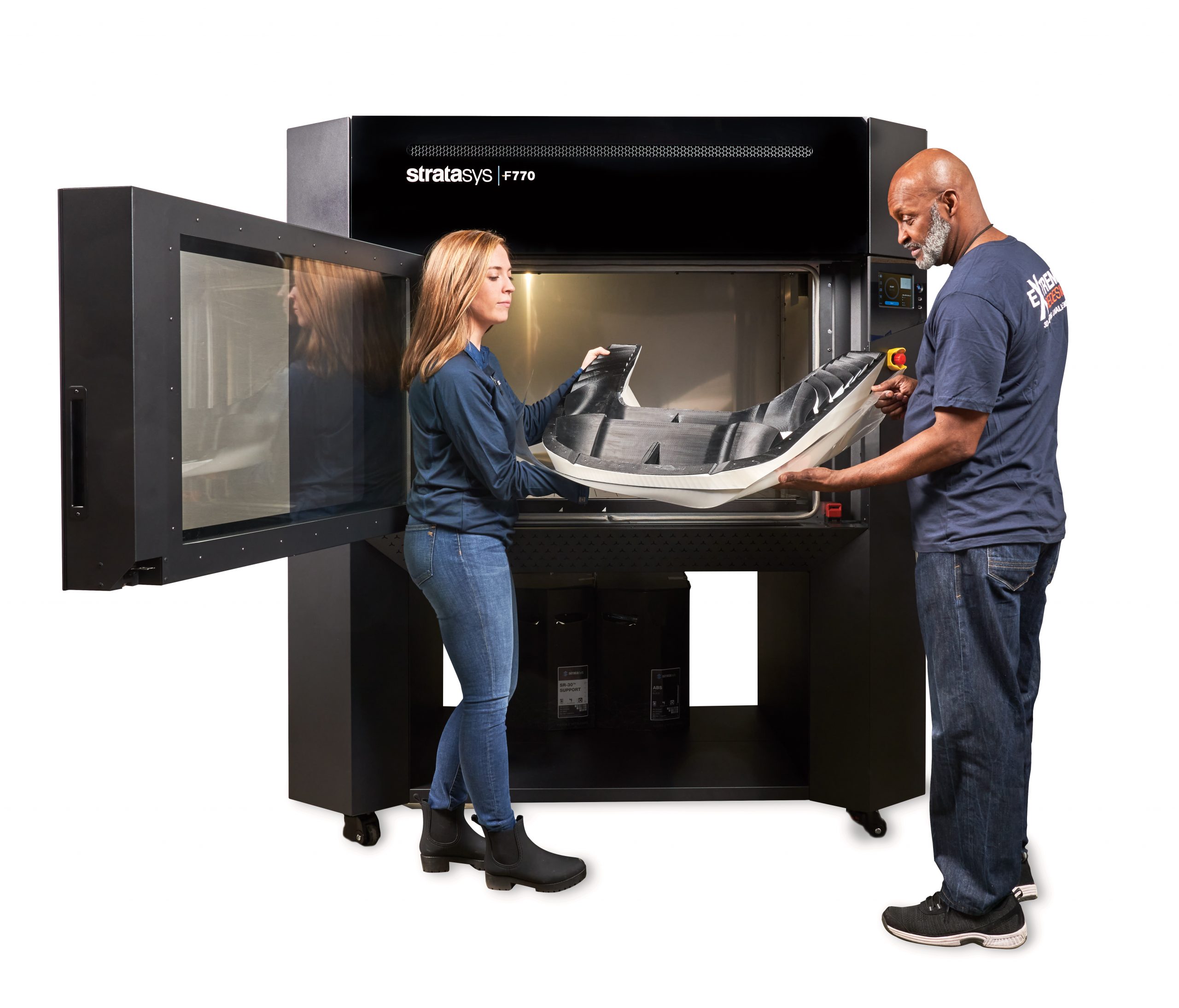
Doug Steindl, Corporate Development Lab Supervisor at luxury appliance manufacturer Sub-Zero Group, which has been a beta customer for the F770, has observed cost savings of between 30 and 40 percent as a result of being able to print larger parts in-house.
“Our 3D printing lab is faced with new product builds every six weeks,” he said. “The faster we can turn things around, the better, and the quickest way we can do that is to keep as much in-house as possible. The F770 delivers on that need.”
The F770 is now available for orders and is estimated to ship in late June 2021. The printer will be available with either ivory ASA or black ABS-M30 material and SR-30 soluble support material.
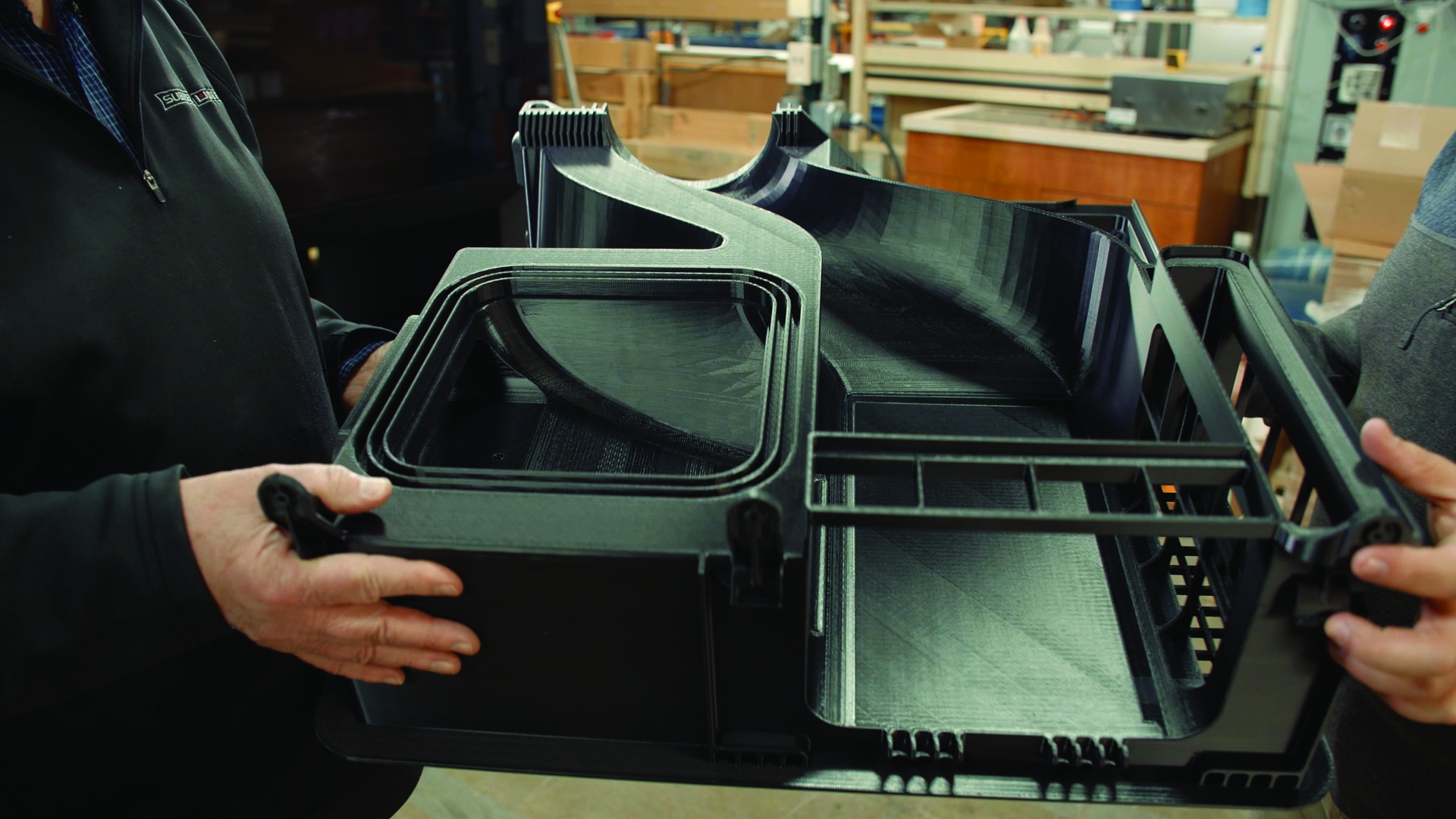
Subscribe to the 3D Printing Industry newsletter for the latest news in additive manufacturing. You can also stay connected by following us on Twitter and liking us on Facebook.
Looking for a career in additive manufacturing? Visit 3D Printing Jobs for a selection of roles in the industry.
Featured image shows Stratasys F770 3D printer installed at Sub-Zero. Photo via Stratasys.



